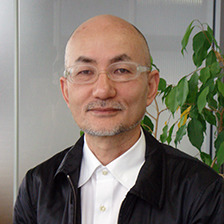Dentsu Design Talk, which began in 2005, celebrates its 100th session this year. We will introduce digest versions of carefully selected past talk sessions, covering one theme in two parts.
Dentsu Design Talk is scheduled for weekly updates every Friday.
(Planning & Production: Dentsu Inc. Human Resources Bureau, Aki Kanahara / Article Editing: Sugatsuke Office / Composition Support: Eiji Kobayashi)
<Part 1, Part 2>
Continuing from Part 1, guest speaker Dai Tamura, Director of Hakuhodo Innovation Lab and the University of Tokyo i.school (at the time), joined the discussion. Executive Officer Kenji Shiroto (at the time) led the conversation exploring the potential of advertising agencies through the lens of innovation.
Many people consider the idea that "good ideas create new habits, values, and behaviors" to be fundamental to innovation. Tamura calls this the Prospective approach. In contrast, he describes a Retrospective approach, where "the ideal new habits, values, and behaviors are envisioned first, and ideas are generated afterward." Tamura's research focuses on this "retrospective approach." By understanding societal realities, one first contemplates how society should evolve. Sharing this vision and philosophy creates a ripple effect of empathy that ultimately generates new movements and markets themselves. Apple's series of innovations actually fall into this category. Founder Steve Jobs had a clear vision of an ideal world, and the ideas for how to realize that world—the iPhone and Siri—were the means to achieve it.
So, what is the modern strategy for realizing such innovation? Mr. Tamura states, "Innovation is destined to be recognized only if it ultimately impacts society." For 20th-century innovation based on science and technology, the strategy was a scale-up model centered on capital. However, the ultimate financial innovation developed in America under this model ended up creating a direction where winners monopolized wealth. Conversely, the Slow Food movement, originating in the Italian town of Bra in the late 20th century, demonstrated that sharing a concept alone could generate significant global social impact. Tamura suggests this model could represent a new form of innovation. That is, individual players may be small, but by possessing a single strong concept and centering on shared empathy for a particular social reality, they collaborate to create a movement that generates new value collectively.
In his post-Great East Japan Earthquake reconstruction support for Kesennuma City, conducted with volunteer students from the University of Tokyo, Mr. Tamura launched Project MARU. Rather than providing technology or materials, the project aimed for Kesennuma's people to continuously cultivate new cultures and industries while fostering mutual exchange with attractive regions worldwide, drawing a "circle" (MARU) of connection, ultimately carving out their own future. Thus, when considering how to introduce an innovation mindset to such depleted regions, what becomes necessary is "creating dreams." Can we create a "state of openness" toward the future – one that makes young people who left the region feel they absolutely want to return in ten years, that something exciting awaits them? In this modern age where dreams about science and technology have faded, isn't creating those dreams precisely the role of an advertising agency, and doesn't it connect to Dentsu Inc.'s slogan, "Good Innovation."?
Responding to this, Mr. Shiroto stated, "In today's open, flat, networked society, it's crucial to consider the best possible combinations of people—not just within Japan but globally—to tackle a single plan." He then suggested that, when thinking this way, "the model of handling multiple companies within a single industry holds the greatest potential in Japan and will become the 21st-century model." He further emphasized that it's equally important to rethink "What is Good?" alongside "What is Innovation?" He called on the audience to consider: What is Good for the world, for society, for companies, for each of us, and for the future? He concluded his talk with this invitation for everyone to ponder this question.






